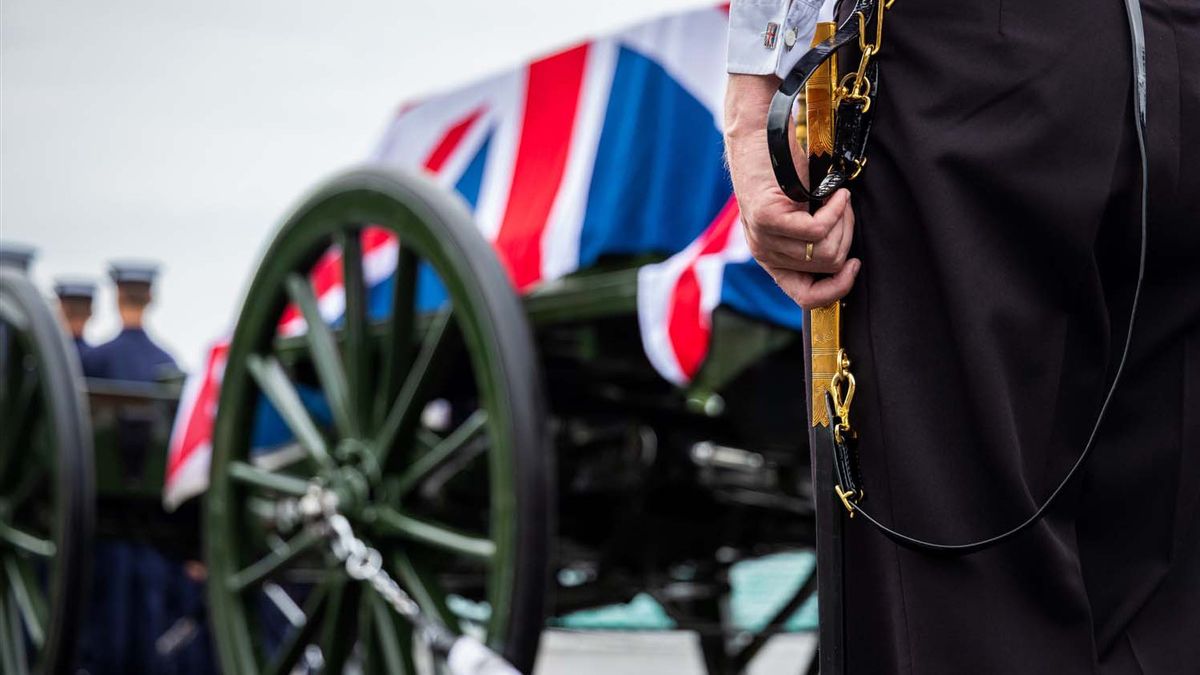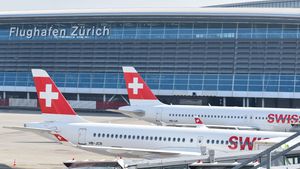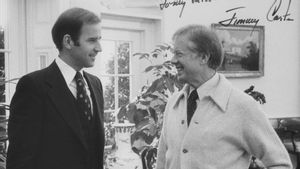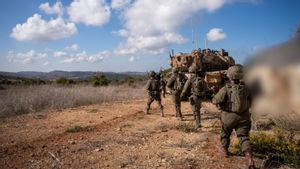JAKARTA - Hundreds of members of the British Royal Navy are preparing to become one of the vital elements in Queen Elizabeth II's funeral on Monday next week, continuing the tradition of state funerals.
The team, consisting of 98 Royal Navy sailors known as the Sovereign's Guard, will recall Queen Elizabeth's coffin on a 123-year-old gunline using a white rope during the funeral procession to Westminster Abbey in London.
Meanwhile, 40 other sailors lined up behind the train to act as brakes. How did this all start?
The tradition begins with Queen Victoria. In 1901, the coffin of Queen Victoria will be carried on a gun train via Windsor. But in the very cold weather in February, the horses that will pull her panicked and stood, 'threat' will drop the coffin from the train, reported by The National News September 16.
Seeing this, Prince Captain Louis of Battenberg, who later became the First Sea Lord of the Royal Navy, intervened and suggested to the new king, King Edward VII, for the senior service to intervene.
Citing the Naval Historical Society of Australia, Prince Louis ordered the Commander of the Lieutenant Navy Algernon fire, for its sailors to be prepared to pull the gunship. Previously, about 100 sailors under the levy were prepared to line up on the side of the Windsor Station road.
After this is approved, the horses are released and the improvised rope is mounted onto a gun train, weighing 3,000kg (2.5 tons), for then the sailors who will move the train.
Interestingly, the entire process of transitioning from this horse is said to have taken place without a commotion and only took five minutes.
The team of sailors who were brought along was able to ensure that the coffin was carried safely for the rest of the route until it arrived at Windsor Castle.
Just nine years later, at King Edward VII's funeral, the new routine was immortalized as a tradition that has been followed at all state funerals since, including the funerals of King George V and King VI, British Prime Minister Sir Winston test and Lord Louis Mountbatten's funeral, son of Captain Prince Louis of Battenberg.
For the British Royal Navy soldiers, their "respect, privilege and duty" is to be involved in Queen Elizabeth II's funeral procession.
"For everyone in the parade, they will have moments of reflection and honor to be able to serve them, as well as moments of sadness. We will all feel a lot of emotion. He (the late Queen) will mean a lot to all of us in very different ways, we will all be touched by his presence in several ways," said Rear Admiral Jude Terry, who is responsible for naval funeral planning and is the first woman.
It is known, Queen Elizabeth II will be buried side by side with her husband, Prince Philip Duke ofsifat at the Kapel Memorial King George VI, Kapel St George, Windsor Castle.
The English, Chinese, Japanese, Arabic, and French versions are automatically generated by the AI. So there may still be inaccuracies in translating, please always see Indonesian as our main language. (system supported by DigitalSiber.id)













